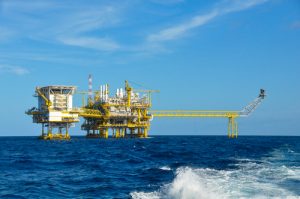
All areas of the Gulf of Mexico should be considered by the U.S. Department of the Interior (DOI) in upcoming leasing plans for oil and gas development, urged Republican U.S. Sens. Bill Cassidy (R-LA) and Roger Wicker (R-MS) in a Feb. 28 letter to Secretary of the Interior Ryan Zinke.
“The Gulf of Mexico plays a central role in the future of U.S. energy production,” wrote the senators. “The infrastructure, skilled workforce and supporting industries are already in place and drive our state economies. It is only natural to look to the waters off our coast as the next frontier for energy security.”
U.S. Sens. John Cornyn (R-TX), John Kennedy (R-LA), Thad Cochran (R-MS) and Richard Shelby (R-AL) joined Sens. Cassidy and Wicker in signing the letter, which is regarding the National OCS Oil and Gas Leasing Program.
The National OCS Program for oil and gas development establishes a schedule of oil and gas lease sales proposed for planning areas of the U.S. Outer Continental Shelf (OCS). The program specifies the size, timing and location of potential leasing activity that the Secretary of the Interior determines will best meet national energy needs, according to the Department of the Interior’s (DOI) Bureau of Ocean Energy Management (BOEM).
Currently, BOEM is working under the 2017-2022 National OCS Program, which will be replaced by a new National OCS Program for 2019-2024 that BOEM is developing now under DOI and White House directives issued in 2017. The first of three proposals for 2019–2024, the Draft Proposed Program, was released on Jan. 4 and comments on it are due by March 9.
In their letter supporting DOI’s recognition of the Gulf Coast’s role in future offshore leasing planning, the senators noted the region’s decades-long importance in oil and gas production for the United States, which they said is ranked the number one global producer of both.
The lawmakers wrote that the region directly provides offshore production jobs that employ tens of thousands of Americans in their states and “indirectly supports hundreds of thousands of jobs.” Likewise, these jobs pump in critical revenue to states, which use monies to fund education, transportation and coastal restoration projects, they wrote.
“This production network coexists in the Gulf with an active U.S. military presence, robust shipping in and out of thriving ports, healthy commercial and recreational fishing industries, and off the coast of beautiful beaches and coastal tourist destinations,” the federal lawmakers wrote.
Additionally, such homeland energy production enables the U.S. to remain more energy secure, they noted, “and better shielded from foreign regimes that use energy as a tool against our national security priorities.”
To continue such success, the senators wrote, all new areas of the Gulf, including the eastern section, should be analyzed as DOI and BOEM consider and finalize the Draft Proposed Program and the lease planning process.



